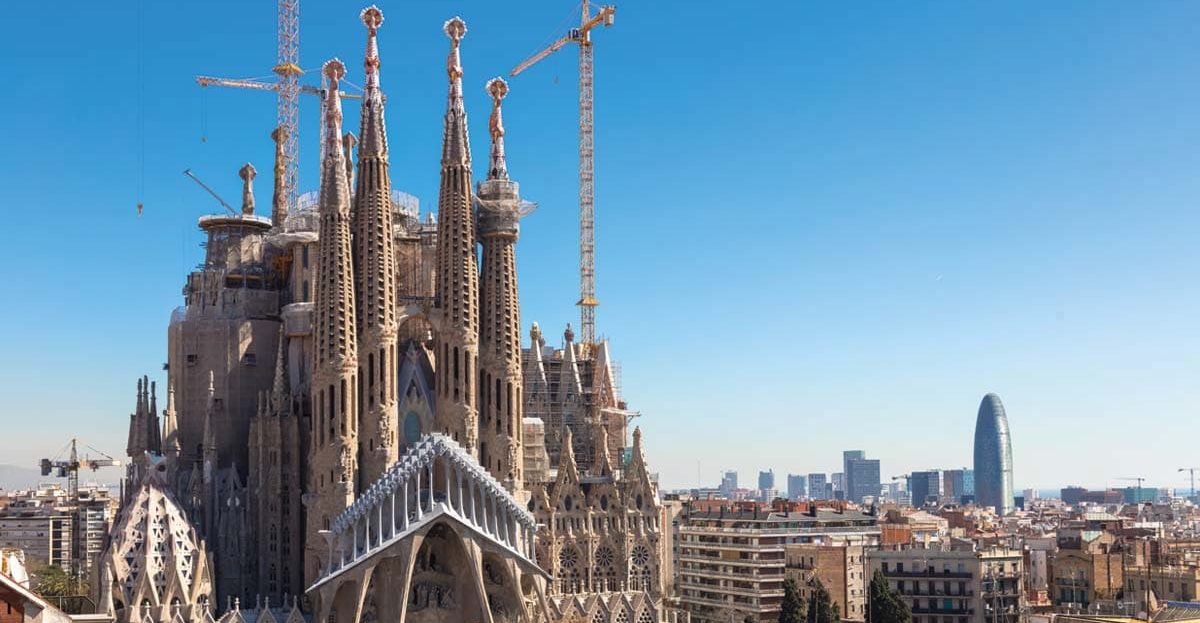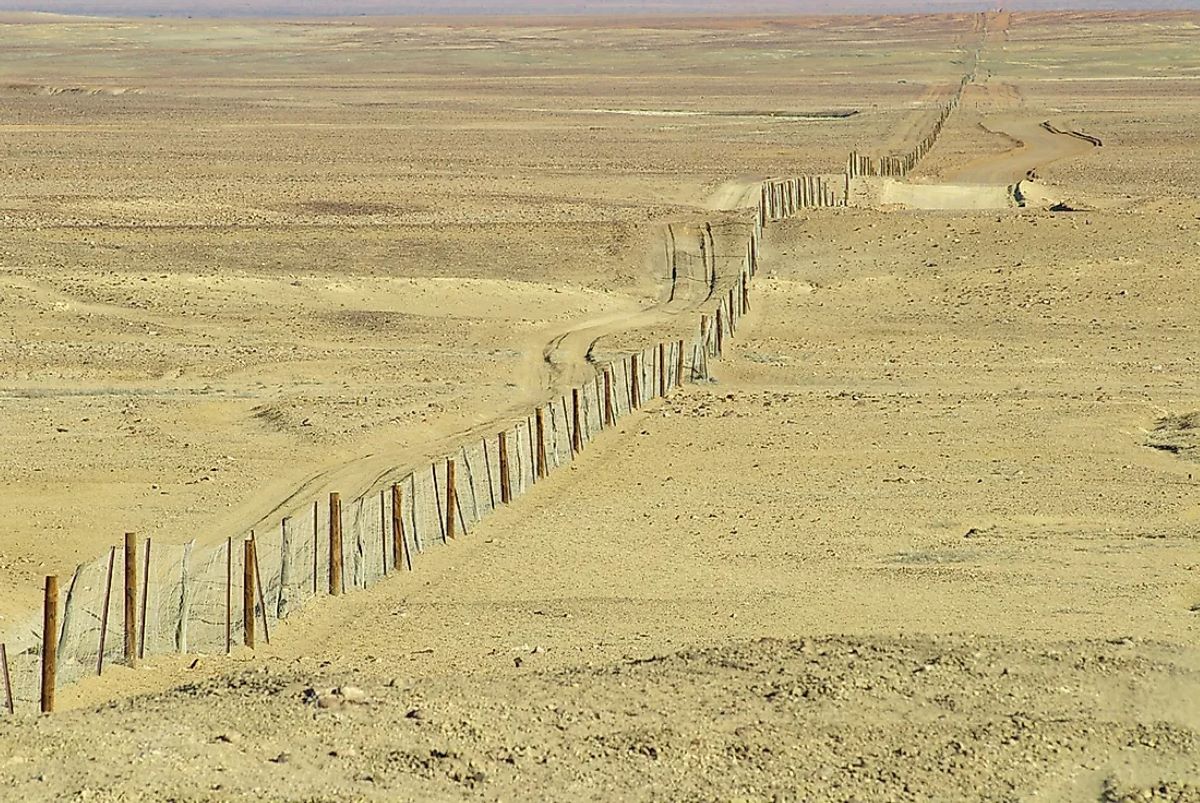Home>diy>Building & Construction>What Is The Longest Construction Project Ever


Building & Construction
What Is The Longest Construction Project Ever
Modified: January 6, 2024
Discover the record-breaking building construction project that holds the title for the longest ever. Explore the incredible feat of engineering and the challenges faced in this remarkable endeavor.
(Many of the links in this article redirect to a specific reviewed product. Your purchase of these products through affiliate links helps to generate commission for Storables.com, at no extra cost. Learn more)
Introduction
Welcome to the world of construction, where the power of human vision, determination, and skill combine to create remarkable structures that stand the test of time. Construction projects can vary in size, complexity, and duration, but they all share one common goal: to bring ambitious ideas to life.
In this article, we will explore some of the longest construction projects in history, each with its own unique story and impact on civilization. From massive architectural marvels to engineering wonders, these projects have captivated the world with their grandeur and endurance.
Get ready for a fascinating journey through time and witness the incredible feats of human ingenuity that have shaped our world. Let’s delve into the world of construction and discover the longest construction projects ever.
Key Takeaways:
- Monumental construction projects like the Great Wall of China and the Pyramids of Egypt showcase human ambition, innovation, and the ability to overcome challenges, leaving an indelible mark on civilization.
- From the engineering marvels of the Panama Canal to the enduring legacy of the Hoover Dam, these construction projects stand as testaments to human perseverance, skill, and the power of collaboration.
Read more: What Mattress Lasts The Longest
The Great Wall of China
When speaking about long-lasting construction projects, it is impossible not to mention the iconic Great Wall of China. Spanning over 13,000 miles, this awe-inspiring structure holds the title as one of the longest construction projects in history.
Construction of the Great Wall began around the 3rd century BC and continued for centuries, with numerous dynasties contributing to its construction and expansion. The primary purpose of the wall was to provide defense against invasions from various nomadic tribes in the north, acting as a formidable barrier across the vast Chinese landscape.
Over the centuries, the wall underwent numerous reconstructions and extensions, incorporating different building materials and designs. It is estimated that millions of laborers, including soldiers, prisoners, and local peasants, contributed their sweat and toil to erect this architectural wonder.
The Great Wall has not only withstood the test of time but has become a symbol of Chinese civilization and cultural heritage. Its majestic presence has attracted millions of visitors from around the world, amazed by the sheer magnitude and breathtaking views it offers.
Today, parts of the Great Wall have been restored and preserved, allowing visitors to experience the marvels of ancient engineering and immerse themselves in the rich history and legends associated with this colossal construction project.
The Cathédrale Notre-Dame de Chartres
Rising majestically in the charming town of Chartres, France, the Cathédrale Notre-Dame de Chartres is not just an architectural marvel but also a testament to human dedication and perseverance. This iconic cathedral holds the distinction of being one of the longest construction projects in history.
Construction of the Cathédrale Notre-Dame de Chartres began in the 12th century and continued for over 150 years. The sheer scale and intricacy of the cathedral’s design are awe-inspiring, with its remarkable Gothic architecture and stunning stained glass windows.
One notable feature of the cathedral is the Chartres Labyrinth, an elaborate geometric design embedded in the floor. Pilgrims and visitors have walked this labyrinth for centuries, symbolizing a journey of spiritual reflection and introspection.
Despite facing challenges such as wars, fires, and architectural modifications over the years, the Cathédrale Notre-Dame de Chartres has managed to maintain its original grandeur. Its remarkable preservation is thanks to the ongoing efforts of dedicated craftsmen, architects, and restoration experts who have worked tirelessly to ensure its historical and cultural significance.
Today, the Cathédrale Notre-Dame de Chartres continues to be an active place of worship and a popular tourist attraction. Its breathtaking beauty, rich history, and spiritual ambiance draw visitors from all corners of the globe, eager to marvel at the masterpiece that took centuries to complete.
The Sagrada Familia
When it comes to unique and groundbreaking construction projects, the Sagrada Familia in Barcelona, Spain, stands in a league of its own. Antoni Gaudí’s masterpiece has not only become an iconic symbol of the city but also one of the longest-running construction projects in history.
Construction of the Sagrada Familia began in 1882 and continues to this day, long after Gaudí’s passing in 1926. The cathedral’s unconventional architecture, inspired by nature and characterized by its fluid lines and intricate details, has captivated generations of architects, engineers, and art enthusiasts.
What makes the Sagrada Familia truly unique is the fusion of Gothic and Art Nouveau styles, combined with Gaudí’s innovative vision. The cathedral was designed to be a testament to the glory of God, with its towering spires reaching heights of over 560 feet.
Despite the lengthy construction period, the Sagrada Familia remains a work in progress. The ongoing construction is a testament to the dedication and commitment of numerous architects, craftsmen, and artisans who have dedicated their lives to fulfilling Gaudí’s vision.
Today, thousands of visitors flock to witness the awe-inspiring beauty of the Sagrada Familia. Its interior is a symphony of light and color, with vibrant stained glass windows casting a magical glow across the space. The Sagrada Familia is not just a cathedral, but a true testament to human creativity, perseverance, and the power of architectural innovation.
The Panama Canal
The Panama Canal is undoubtedly one of the most impressive feats of engineering in the world and holds the distinction of being one of the longest construction projects in history. Spanning across the narrow isthmus of Panama, this waterway revolutionized global trade and maritime transportation.
The idea of creating a canal to connect the Pacific and Atlantic Oceans dates back to the early 16th century when Spanish explorers first spotted the strategic potential of a canal route. However, it wasn’t until the late 19th century that construction efforts began in earnest.
The French initially took on the project in the late 1800s under the leadership of Ferdinand de Lesseps, who had successfully overseen the construction of the Suez Canal. However, due to challenges such as difficult terrain and rampant diseases like yellow fever and malaria, the French project faced financial difficulties and was eventually abandoned.
In 1904, the United States took over the construction of the Panama Canal. Led by chief engineer John Stevens and later continued by George Washington Goethals, the project faced similar obstacles but ultimately succeeded through innovative engineering techniques and thorough disease control measures.
The Panama Canal was completed and officially opened in 1914, forever changing global trade patterns by providing a shorter and more efficient route between the Atlantic and Pacific Oceans. Ships of all sizes and types could now traverse the canal, saving time, money, and the hazards of navigating around the treacherous Cape Horn.
Today, the Panama Canal remains a vital artery of international trade, accommodating thousands of vessels each year. The canal’s complex system of locks facilitates the passage of ships through a series of waterways and elevations, ensuring safe and smooth navigation.
The Panama Canal stands as a testament to human perseverance, engineering prowess, and the determination to overcome challenges in order to achieve monumental goals.
The longest construction project ever is the Great Wall of China, which took over 2,000 years to build. It’s a testament to the perseverance and ingenuity of ancient civilizations.
Read more: What Candles Burn The Longest
The Transcontinental Railroad
The construction of the Transcontinental Railroad in the United States stands as a monumental achievement in connecting the east and west coasts of the country. This massive infrastructure project, one of the longest construction endeavors in history, revolutionized transportation and played a pivotal role in shaping the nation.
The idea for a railroad that would span the entire continent was first proposed in the mid-19th century as the United States sought to expand its territories and facilitate trade and travel across the vast expanse. Construction on the Transcontinental Railroad began in 1863 during the American Civil War.
The project was the result of collaboration between two railroad companies: the Central Pacific Railroad, which started from Sacramento, California, and the Union Pacific Railroad, which started from Council Bluffs, Iowa. These two companies faced tremendous challenges, including treacherous terrain, harsh weather conditions, and conflicts with Native American tribes.
Thousands of workers, including Chinese immigrants and Civil War veterans, labored tirelessly to lay track, blast through mountains, and bridge vast gaps in the landscape. The Central Pacific Railroad tackled the formidable Sierra Nevada mountain range, while the Union Pacific Railroad traversed the rugged and expansive Great Plains.
Finally, after six years of immense effort and sacrifice, the two railroad lines met at Promontory Summit, Utah, on May 10, 1869. This historic event was celebrated with the driving of a golden spike, marking the completion of the Transcontinental Railroad.
The completion of the Transcontinental Railroad had a profound impact on the United States. It unified a vast nation, reduced travel time from months to days, and opened up new opportunities for trade, settlement, and economic growth. The railroad not only facilitated the movement of people and goods but also symbolized the pioneering spirit and the promise of progress.
Today, while the original tracks have been replaced and expanded upon, the Transcontinental Railroad’s legacy endures. It remains a testament to the perseverance, teamwork, and ingenuity of those who transformed a visionary idea into a monumental reality.
The Pyramids of Egypt
The Pyramids of Egypt are among the most iconic and enduring structures in human history. These ancient marvels, dating back thousands of years, stand as a testament to the architectural brilliance and cultural significance of the ancient Egyptians. They are not only remarkable in their construction but also one of the longest construction projects ever undertaken.
The ancient Egyptians built pyramids as grand tombs for their pharaohs, who were believed to become gods in the afterlife. The construction of pyramids began around 2700 BC in the Old Kingdom and continued for centuries, with each pharaoh aspiring to build a magnificent pyramid that would ensure their eternal legacy.
The most famous of these pyramids, the Great Pyramid of Giza, was built for Pharaoh Khufu and is the largest and oldest of the three pyramids in Giza. It was constructed using massive limestone blocks, carefully placed to create a geometrically precise structure. The sheer scale of the pyramids is awe-inspiring, with the Great Pyramid standing at a height of over 450 feet.
Building the pyramids was an enormous undertaking that required a tremendous amount of labor and meticulous planning. Thousands of skilled craftsmen, engineers, and workers dedicated their lives to ensure the pyramids were constructed with precision and durability. They employed various tools, such as ropes, sledges, and ramps, to transport and position the heavy stone blocks.
The pyramids served not only as tombs but also as symbols of the pharaoh’s divine power and authority. They were believed to be the gateway to the afterlife, where the pharaoh could continue to rule and be reunited with their deified ancestors.
Today, the pyramids continue to captivate our imagination and stand as a testament to the ingenuity and advanced engineering skills of the ancient Egyptians. They have become iconic landmarks, attracting millions of tourists from around the world who marvel at their grandeur and mysteries.
The pyramids are a lasting testament to the ancient Egyptian civilization’s achievements and their profound understanding of architecture and engineering. They are a reminder of the rich history and cultural heritage that has shaped our world.
The Hoover Dam
The Hoover Dam, situated on the border of Nevada and Arizona in the United States, is more than just a massive concrete structure. It is a testament to human ingenuity, engineering prowess, and the ability to transform natural resources into something extraordinary. Standing as one of the longest construction projects in history, the Hoover Dam has had a profound impact on water management, electricity generation, and the development of the American Southwest.
Construction of the Hoover Dam commenced in 1931 during the height of the Great Depression. Its primary purpose was to control the unpredictable Colorado River, which had caused devastating floods in the region. The dam was also intended to facilitate water storage and provide a consistent water supply for irrigation and hydroelectric power.
The construction effort was a massive undertaking that involved thousands of workers, engineers, and designers. They had to overcome formidable challenges, including the extreme heat of the desert, treacherous canyon walls, and demanding geological conditions.
The construction of the Hoover Dam was an engineering marvel in its time. It required the careful placement of 6.6 million tons of concrete, as well as meticulous planning to divert the Colorado River and create the foundation for the dam. The result was a 726-foot tall behemoth that stretched over 1,200 feet across the Black Canyon, forming the iconic Lake Mead reservoir.
The Hoover Dam not only tamed the Colorado River but also brought about significant benefits to the region. It provides vital irrigation water to farmlands, ensuring agricultural productivity in the arid southwestern United States. Additionally, the dam generates clean and sustainable hydroelectric power, supplying electricity to millions of homes and businesses.
Today, the Hoover Dam stands as a testament to human achievement and a symbol of the vision and determination that shaped the American West. It continues to draw visitors from around the world, who marvel at its sheer magnitude and appreciate the crucial role it plays in water management and renewable energy production.
The Hoover Dam is not just a concrete barrier; it is a testament to human resilience, sustainable development, and the harnessing of nature’s resources for the betterment of society.
The Channel Tunnel (Eurotunnel)
The Channel Tunnel, also known as Eurotunnel, is an engineering marvel that connects the United Kingdom with mainland Europe. Stretching over 31 miles (50 kilometers) beneath the English Channel, it stands as one of the longest and most ambitious construction projects in history. The tunnel has not only revolutionized travel between the UK and Europe but has also become an emblem of human cooperation and technological advancement.
Construction of the Channel Tunnel began in 1988 and took six years to complete. The project involved the collaboration of thousands of engineers, workers, and technicians from both the UK and France. Their mission was to dig three separate tunnels—one for vehicles, one for trains, and a service tunnel—deep beneath the sea bed, while facing various geological challenges.
The tunnel was constructed using a combination of groundbreaking techniques, including tunnel boring machines, underwater blasting, and advanced concrete lining. This allowed for the creation of a secure and reliable passage for both freight and passenger trains and vehicles.
On May 6, 1994, Queen Elizabeth II and President François Mitterrand of France officially opened the Channel Tunnel, marking a new era of connectivity between the UK and mainland Europe. Since then, the tunnel has provided a swift, convenient, and efficient transportation link, reducing travel time between England and France to just under 35 minutes by train.
The Channel Tunnel not only facilitates tourism and business but also promotes cultural exchange and economic growth. It serves as a vital transportation link for trade and commerce, allowing goods to flow seamlessly between the UK and the European mainland. Furthermore, it offers unparalleled opportunities for travelers to explore different cultures, landscapes, and experiences.
Today, the Channel Tunnel stands as a symbol of unity and collaboration between nations. It has become an enduring testament to human innovation and engineering excellence, demonstrating the remarkable capabilities of mankind to overcome geographical barriers.
As the train speeds through the tunnel beneath the English Channel, passengers are reminded of the extraordinary achievement that has connected two nations, fostering bonds and enriching lives.
Read more: What Brand Washer Lasts The Longest
Conclusion
Throughout history, mankind has embarked on monumental construction projects that have left an indelible mark on civilization. From the towering pyramids of Egypt to the modern marvels like the Channel Tunnel, these projects showcase the ingenuity, determination, and collaborative efforts of human beings.
These long-lasting construction endeavors not only shape our physical landscape but also contribute to our collective heritage and cultural identity. They serve as testaments to human ambition, innovation, and the ability to overcome challenges that stand in the way of progress.
From the Great Wall of China, which has stood for centuries as a symbol of defense and unity, to the cathedrals like Notre-Dame de Chartres and the Sagrada Familia, which inspire awe and wonder, each project tells a unique story that reflects the values and aspirations of the societies that built them.
The Panama Canal and the Transcontinental Railroad have transformed the way we travel and conduct trade, opening new possibilities for economic growth and global connectivity. These engineering marvels have proven that human perseverance and skill can conquer even the most formidable obstacles.
The pyramids of Egypt and the Hoover Dam remind us of the enduring power of human achievements, transcending time and leaving a lasting legacy for future generations. These iconic structures stand as a testament to the creativity and dedication of those who came before us.
As we marvel at these remarkable construction projects, we must also appreciate the collaborative efforts of the countless individuals who contributed their skills and expertise to bring these visions to life. The architects, engineers, laborers, and craftsmen who poured their energy into these projects have left an everlasting imprint on the world.
As we continue to build and shape our world, let us draw inspiration from these historic constructions. They remind us that with vision, determination, and collaboration, we can overcome any challenge, forge new paths, and leave a lasting legacy for generations to come.
So, let us celebrate the achievements of these magnificent construction projects and continue to build a future that reflects the same spirit of innovation and perseverance that have marked our past.
Frequently Asked Questions about What Is The Longest Construction Project Ever
Was this page helpful?
At Storables.com, we guarantee accurate and reliable information. Our content, validated by Expert Board Contributors, is crafted following stringent Editorial Policies. We're committed to providing you with well-researched, expert-backed insights for all your informational needs.














0 thoughts on “What Is The Longest Construction Project Ever”